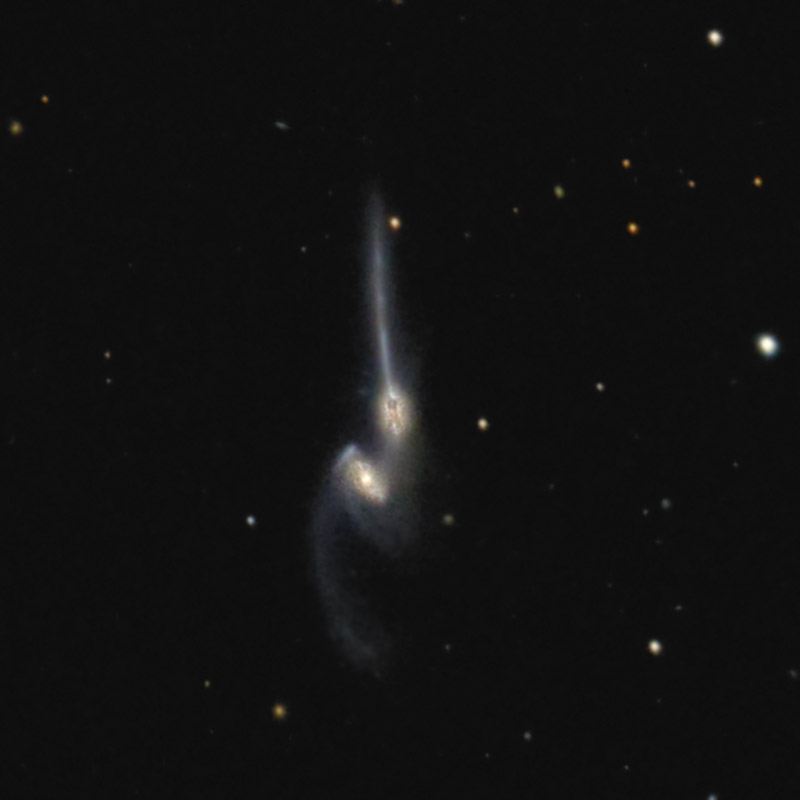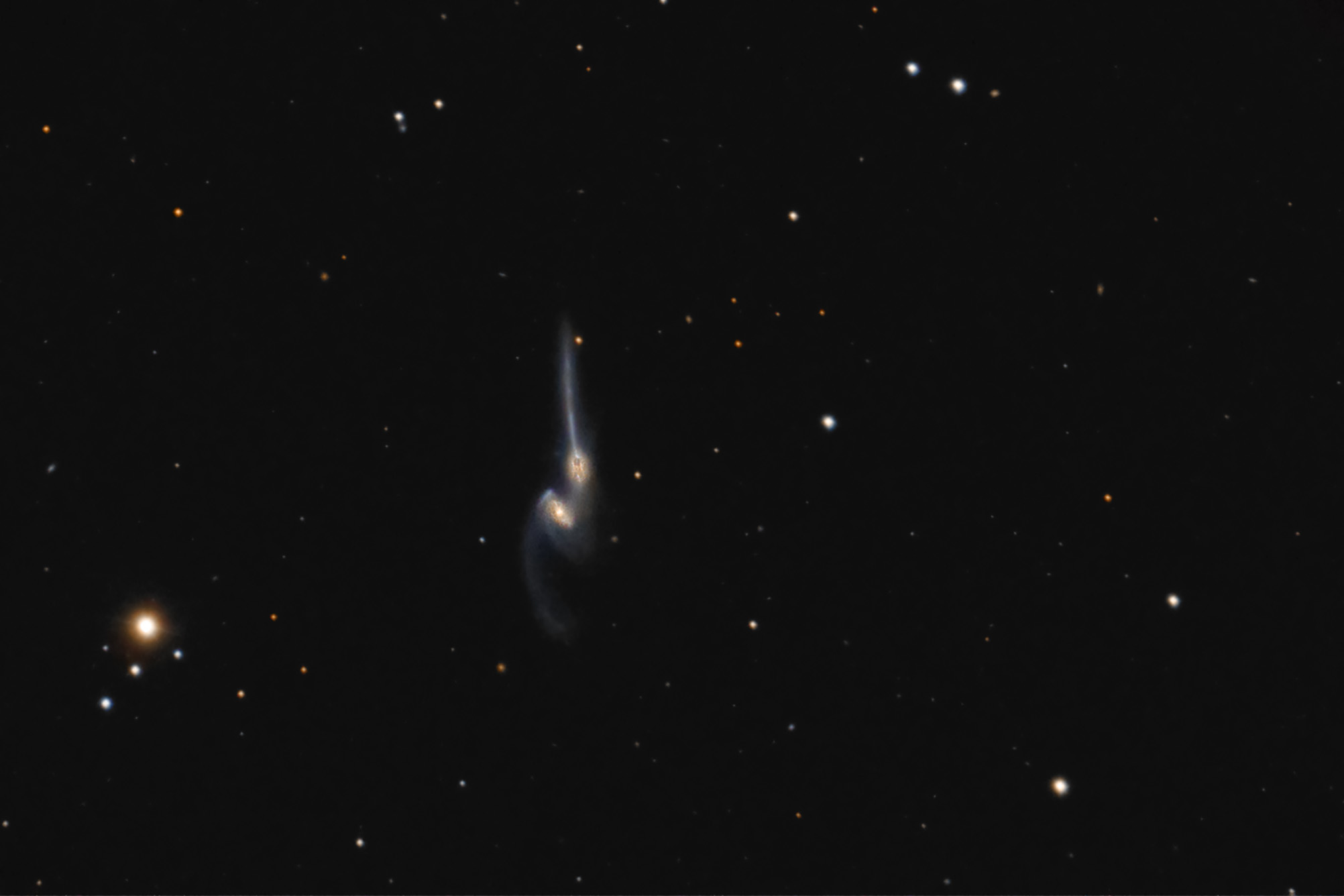| Description | Images |
Object name: ARP242Designation(s): ARP242, NGC4676, IC0819, IC0820, ARP 242/NGC 4676/The Mice is a famous pair of interacting galaxies in northern Coma Berenices about 300 light-years distant. While the NGC designation applies to both galaxies the northern one is IC 819 and the southern IC 820. This apparently was because William Herschel saw it as one object though did note it as a "possibly bi-nuclear" nebula when he found it on March 13, 1785 but Rudolf Spitaler recognized two when he recorded it over a century later on March 20, 1892. He recorded it as IC 0819 and IC 0820. It didn't make either of the Herschel 400 observing programs. Related Designation(s):2MASS J12461007+3043548, 2MASS J12461124+3043217, 2MASX J12461005+3043546, 2MASXi J1246100+304355, 2MASXi J1246112+304321, AKARI J1246102+304357, ARP 242, ARP 242 NED01, ARP 242 NED02, ARP242, ASK 578526.0, ASK 579226.0, CALIFA 577, CALIFA 939, CGCG 1243.7+3100, CGCG 1243.7+3100 NED01, CGCG 1243.7+3100 NED02, CGCG 159-072, CGCG 159-072 NED01, CGCG 159-072 NED02, CGCG 159-072N, CGCG 159-072S, CXO J124610.0+304355, CXO J124611.2+304321, ECO 03705, ECO 03706, ECO 11655, FIRST J124610.0+304355, FIRST J124611.3+304323, HOLM 459, HOLM 459A, HOLM 459B, IC 0819, IC 0820, IC0819, IC0820, IRAS 12437+3059, IRAS F12437+3100, KPG 355, KPG 355A, KPG 355B, MCG +05-30-076, MCG +05-30-077, Mice Galaxy, Mice Galaxy NED01, Mice Galaxy NED02, NGC 4676, NGC 4676:[LVR2003] NUC1, NGC 4676:[LVR2003] NUC2, NGC 4676:[R2003] A, NGC 4676:[R2003] B, NGC 4676A, NGC 4676B, NGC 4676S, NGC4676, NGP9 F322-0383258, NSA 103362, NSA 103545, NVSS J124610+304351, PGC 043062, PGC 043065, SDSS J124610.10+304354.8, SDSS J124610.11+304354.8, SDSS J124610.11+304354.9, SDSS J124610.14+304354.9, SDSS J124611.24+304321.8, SDSS J124611.24+304321.9, SDSS J124611.25+304321.9, SSTSL2 J124610.08+304355.2, SSTSL2 J124611.24+304321.6, UGC 07938, UGC 07939, UZC J124610.1+304355, UZC J124611.3+304322, VV 224, VV 224a, VV 224b, [DFO95] 059, [DFO95] 060, [GMM2009b] 54, [GMM2009b] 55, [TTL2012] 349729, [TTL2012] 351027, |

